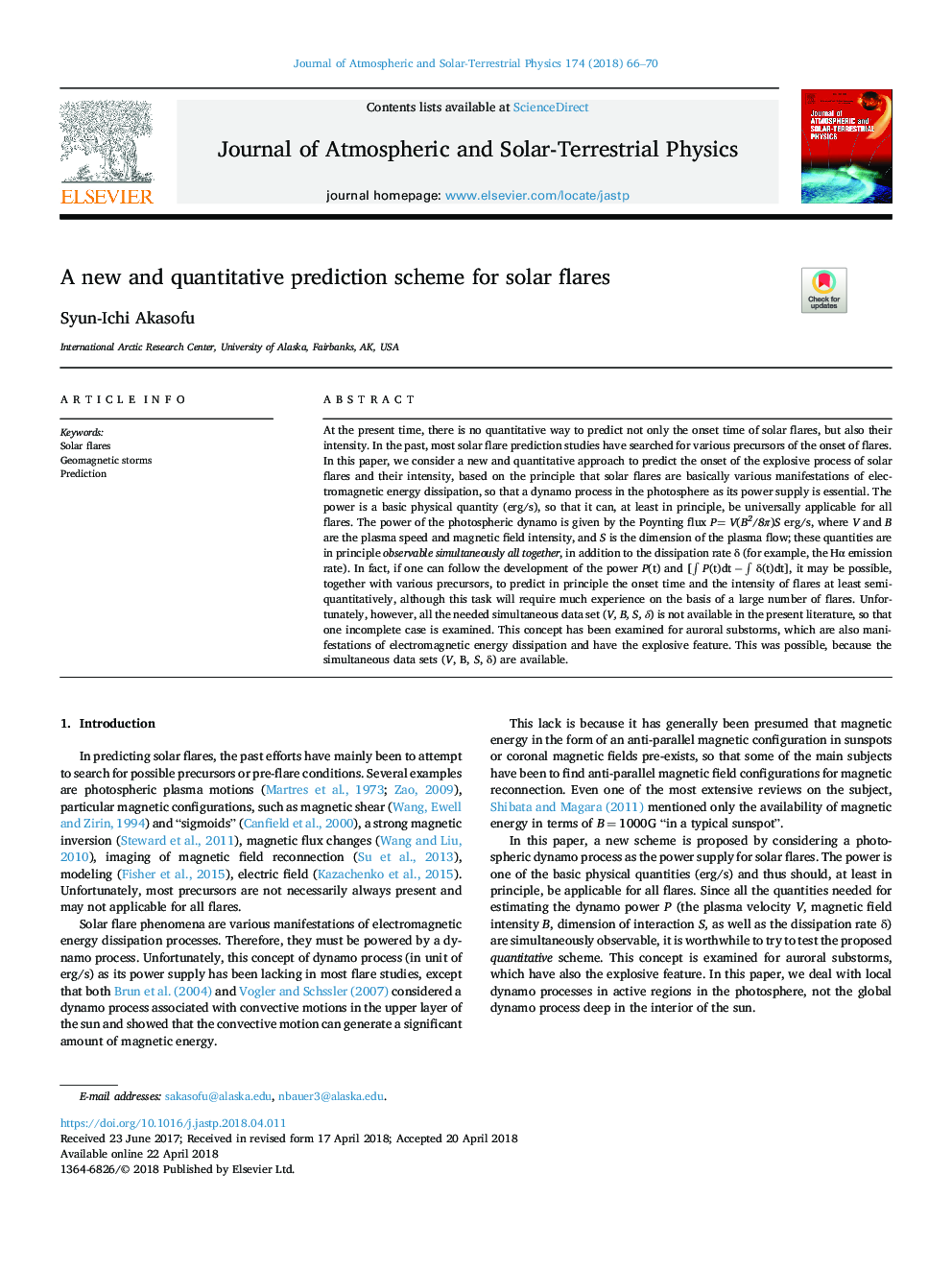| Article ID | Journal | Published Year | Pages | File Type |
|---|---|---|---|---|
| 8139264 | Journal of Atmospheric and Solar-Terrestrial Physics | 2018 | 5 Pages |
Abstract
At the present time, there is no quantitative way to predict not only the onset time of solar flares, but also their intensity. In the past, most solar flare prediction studies have searched for various precursors of the onset of flares. In this paper, we consider a new and quantitative approach to predict the onset of the explosive process of solar flares and their intensity, based on the principle that solar flares are basically various manifestations of electromagnetic energy dissipation, so that a dynamo process in the photosphere as its power supply is essential. The power is a basic physical quantity (erg/s), so that it can, at least in principle, be universally applicable for all flares. The power of the photospheric dynamo is given by the Poynting flux P= V(B2/8Ï)S erg/s, where V and B are the plasma speed and magnetic field intensity, and S is the dimension of the plasma flow; these quantities are in principle observable simultaneously all together, in addition to the dissipation rate δ (for example, the Hα emission rate). In fact, if one can follow the development of the power P(t) and [â« P(t)dtâ¯ââ¯â« δ(t)dt], it may be possible, together with various precursors, to predict in principle the onset time and the intensity of flares at least semi-quantitatively, although this task will require much experience on the basis of a large number of flares. Unfortunately, however, all the needed simultaneous data set (V, B, S, δ) is not available in the present literature, so that one incomplete case is examined. This concept has been examined for auroral substorms, which are also manifestations of electromagnetic energy dissipation and have the explosive feature. This was possible, because the simultaneous data sets (V, B, S, δ) are available.
Related Topics
Physical Sciences and Engineering
Earth and Planetary Sciences
Geophysics
Authors
Syun-Ichi Akasofu,
